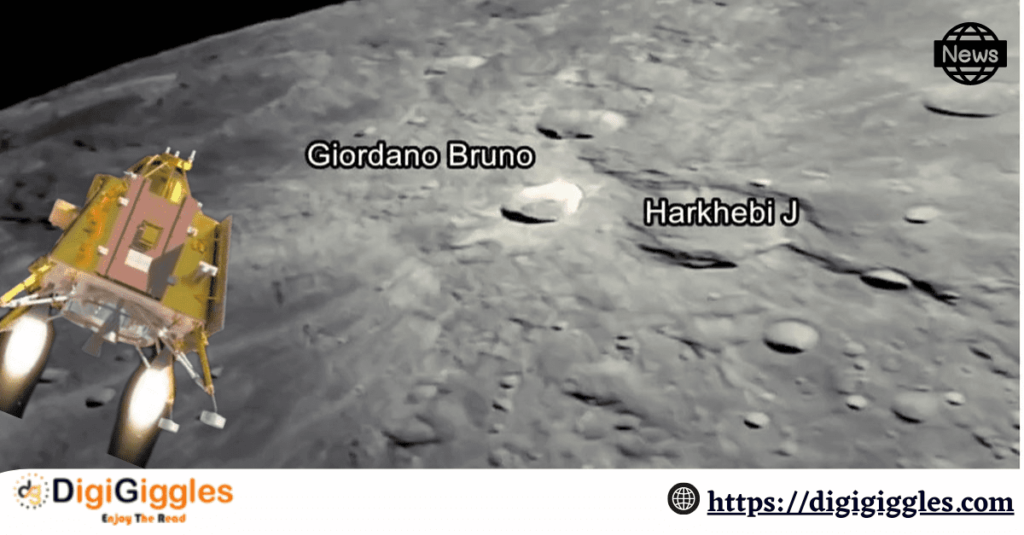As the anticipation mounts for India’s scheduled Chandrayaan-3 lunar landing this Wednesday, an expert takes a deep dive into the captivating realm of lunar exploration.
The Moon has ensnared human fascination for centuries, and with each successive mission, we unearth more details about its geological history, composition, and the vast potential it holds for scientific revelations.
Dr TV Venkateswaran, a scientist at Vigyan Prasar—an independent organization operating under the aegis of the Department of Science and Technology (DST)—and an integral member of the public outreach committee of the Astronomical Society of India Addressed the fundamental inquiries about the Moon’s geological evolution, the importance of its southern pole, the existence of water and ice, as well as India’s ambitious lunar exploration initiatives.
What constitutes the geological history and developmental journey of the Moon?
The Moon’s estimated age is approximately 4.5 billion years, aligning closely with Earth’s age.
The primary theory regarding the Moon’s origin proposes that a celestial object akin to Mars in size collided with a nascent Earth, leading to the gradual aggregation of debris resulting from this collision, ultimately culminating in the formation of the lunar entity.
However, contemporary geological findings from the Moon indicate a possibility of it being slightly younger—by a mere 60 million years than Earth.
What is the comparative weight of objects on the Moon in relation to Earth and what is the reason behind it?
The Moon exerts a gravitational force substantially weaker than that of Earth—approximately one-sixth of Earth’s gravity.
Consequently, objects on the Moon exhibit markedly lower weight compared to their weight on Earth. This phenomenon stems from the Moon’s comparatively diminutive dimensions and mass.
For instance, an individual weighing 68 kilograms on Earth would register a weight of just over 11 kilograms on the Moon.
What prompts Indian scientists to target the Moon’s southern pole for landing?
The lunar south pole has garnered profound attention for exploration due to its distinct attributes and the potential wealth of scientific insights it holds.
It is hypothesized to house an expansive reservoir of water ice within regions that are constantly shrouded in shadow.
The presence of water carries tremendous importance for forthcoming space expeditions, as it can be harnessed as a resource for essentials like potable water, oxygen, and hydrogen for propelling rockets.
Additionally, the area within this region that remains perpetually sunlit maintains temperatures ranging from approximately minus 50 to 10 degrees Celsius. This environment offers more favourable chemical conditions, thereby facilitating the optimal functioning of the electronics aboard the rover and lander.
What lies within the southern pole of the Moon? Does the topography and geological composition resemble that of other lunar areas, or this is an unexplored region?
The terrain and geological characteristics at the Moon’s southern pole diverge from those found in other regions.
Craters that remain in perpetual shadow establish an environment of extreme cold, facilitating the accumulation and endurance of water ice.
The distinctive geographical features of the southern pole also generate sections that are perpetually bathed in sunlight, a potential source of harnessing solar energy.
The landscape encompasses a spectrum ranging from rough terrains to comparably flat expanses, presenting a diverse array of scientific prospects.
What causes a portion of the Moon’s south pole to remain in continuous darkness?
This phenomenon is contingent upon the Moon’s geological characteristics.
The Moon’s axial tilt exhibits only a minor inclination in relation to its orbit around Earth.
As a consequence, specific zones close to the poles are in shadow on a permanent basis.
These shadows give rise to extraordinarily frigid settings, where temperatures can go down to exceptionally low degrees.
Such icy conditions provide an ideal environment for the preservation of water ice over extensive periods, spanning billions of years.
Does water or ice exist on the southern pole of the Moon?
It is certain that there is existence of water and ice in the southern pole region of the Moon.
Various lunar missions, including India’s Chandrayaan 1 launched in 2008 have accumulated the evidence. Those pieces of evidence strongly suggest the presence of water molecules within the regions that experience permanent shadow.
This discovery has led to captivating possibilities for advancing lunar exploration initiatives.
Is water/ice of vital importance for upcoming lunar exploration endeavours?
Undoubtedly, water ice stands as a pivotal element for forthcoming lunar exploration efforts and extends its significance into the broader scope of space exploration.
Its conversion can yield breathable air, potable water, and, most significantly, hydrogen and oxygen for propelling rockets.
Such a development holds the potential to transform space travel by nullifying the requirement to transport these essential resources from Earth, thereby enhancing the feasibility of prolonged missions.
Is there a future agenda for India to execute a human mission to the Moon?
Although ISRO has conveyed its intent to dispatch astronauts into space via the Gaganyaan mission, currently there are no imminent strategies to undertake human lunar missions in the near future.
